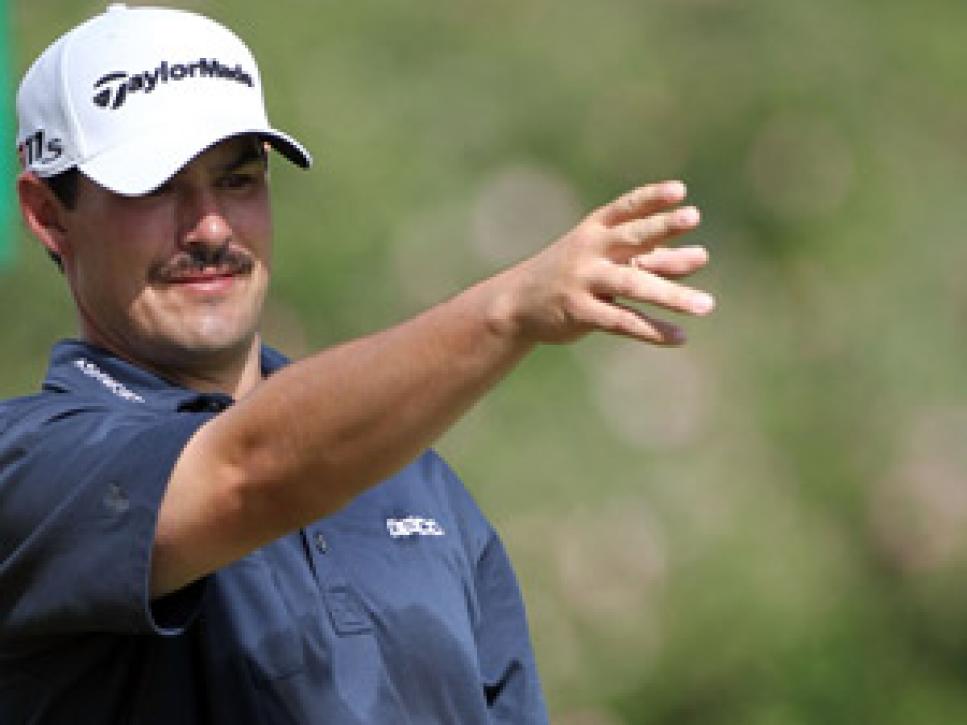News
How He Hit That: Johnson Wagner's Par 5 Strategy
__Editor's Note:__Regular readers of the Instruction Blog have come to appreciate the weekly analysis provided by Kevin Hinton, the Director of Instruction at Piping Rock Club in Locust Valley, N.Y. and one of Golf Digest's Best Young Teachers. In 2012, Hinton will be taking that analysis to an even deeper level by breaking down a crucial moment or sequence in the previous week's tournament. This week, Hinton looks at how Johnson Wagner's play on the par 5s at Waialae Country Club was instrumental in his two-stroke win in the Sony Open.
*Roger Schiffman
Managing Editor
Golf Digest
Twitter @RogerSchiffman*
Kevin Hinton: Johnson Wagner's stellar play on the par 5s at Waialae Country Club was a significant key to his victory. Waialae is a par 70 and has eight par 5s. That's eight total par 5's for the week. Johnson played those eight holes in nine under, eagling the 18th hole in the second and third rounds.

To gain some insight into Wagner's par-5 strategy, I spoke with his coach Bobby Heins, who is the head professional at Old Oaks Country Club in Purchase, N.Y. Bobby gives much of the credit to Johnson's working relationship with his caddie Matt Hauser, as well as improved wedge play. Bobby says that, "Johnson is still an aggressive player and goes for many par 5s in two. However, he has become more willing to lay up and make birdie with his wedge when the situation calls for it. Much of that comes from knowing that his wedge game has improved, as well as good communication and decision-making with his caddie."
*(Wagner, above, has learned to weigh the risks when deciding to go for it on par 5s. Photo by Getty Images.)
*In my view, a good coach, a good caddie, and a good wedge game sure seems to be a winning recipe for Johnson's par-5 success.
[Ljava.lang.String;@5765523f
Here are some other thoughts on par-5 strategy.
__Jim McLean's 'Divide By Two' principle
__
The idea behind this is simple, but can be very helpful, especially for less-advanced players. For example, if you have 240 yards left to the green, instead of selecting an aggressive club and incurring all of the risk that comes with it, simple apply Jim's principle and hit two 120-yard shots. For most players that's a PW or 9 iron. You will likely be putting for birdie far more often than taking the aggressive approach, and you'll certainly eliminate the doubles or triples that inevitably come from going for every green in two.
Know your wedge distances
I am always asking my students how far they hit a full sand wedge. I think of a full sand wedge as about 90 percent effort max. There is really no need to swing harder than this. Some of the answers I get are less than ideal. I hear things like, "No idea," or "I hit my sand wedge 80 yards, or maybe 100, or I guess somewhere between those two." The point is, tour players know two things: (1) Exactly how far their wedges fly, and (2) their most comfortable distance. Make that your wedge goal for 2012. Practice your wedges to specific distances, don't just hit them into a target-less driving range having no idea the distance they are flying. From quality practice, you'll find your ideal "layup" distance. I hit my sand wedge most accurately from 85 yards. Every time I lay up on a par 5, I try to leave myself this distance for my third shot.
Risk vs. Reward
If you are contemplating going for a par 5 in two, do a quick risk/reward analysis. Imagine you hit your 3-wood 220 yards, and you have 250 yards left for your second shot. In this scenario you have HIGH risk (hitting 3 wood isn't easy) and ZERO reward (you can't get the ball on the green). You should always lay up in this situation, ideally to your best wedge distance. Even if you do pull off the 3-wood and manage to miss all the trouble, most people are worse from 30 yards than they are from 80 or 100.
If you are at a distance from where you can reach the green, we can now have a conversation about going for it. First, try to honestly assess how many times out of 10 you'll get the ball on the green. If it's less than 5 out of 10, it should be an automatic layup. If it's more than 5, you should think about going for it. You also have to evaluate how penalizing the miss is. If you're going for an island green, the miss is extremely severe. If your miss leaves you in a bunker or some other manageable situation, going for it is likely a prudent move.
The moral of the story is that I recommend you err on the conservative side. Very rarely do students report to me that their rounds went south because they didn't birdie enough par 5s. Rather, things normally go bad quickly when they start making doubles and triples. The reality is, you can make a lot of bogeys and still shoot a good score. Ninety-nine percent of players will be quite happy with their score the next time they have a round without a double.
-- Kevin Hinton